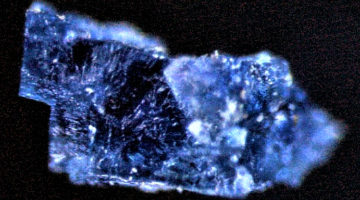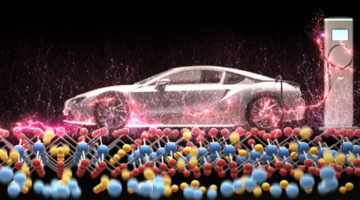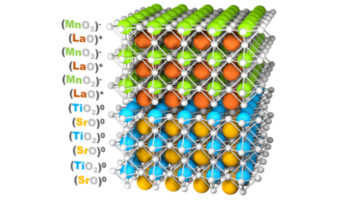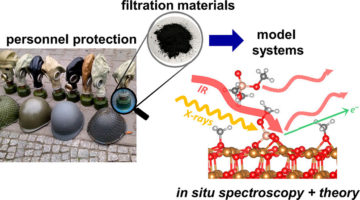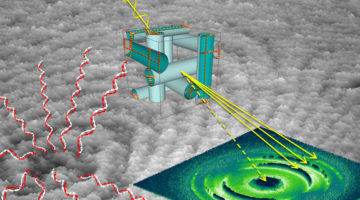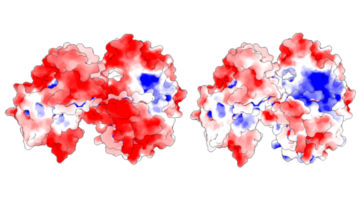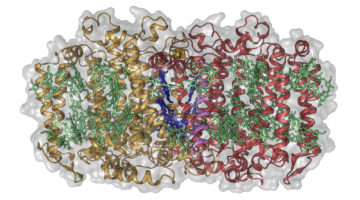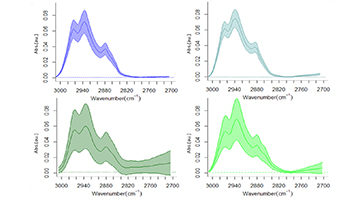Electronic vortex structures have been found to emerge from engineered samples of alternating complex-oxide layers. Resonant soft x-ray diffraction (RSXD) studies using circularly polarized x-rays revealed the vortices’ left- and right-handedness. The intriguing results open the door to electrically controllable chiral devices. Read more »
Science Briefs
Ingredients for Life Revealed in Meteorites
X-ray absorption spectroscopy and other techniques were used to measure the organic chemical components in a pair of meteorites that crashed to Earth in 1998. The study treads new ground in solar system history and asteroid geology, surfacing exciting possibilities for the existence of life elsewhere in Earth’s neighborhood. Read more »![]()
The Microstructure of a Parrotfish Tooth Contributes to Its Toughness
Parrotfish chew on coral, producing hundreds of pounds of sand each year. Mapping the microstructure of parrotfish teeth, scientists found bundles of crystals interwoven like chain mail. The results provide a blueprint for creating ultra-durable materials for mechanical components that undergo repetitive contact, movement, and abrasion. Read more »
A Path to a Game-Changing Battery Electrode
If you add more lithium to the positive electrode of a lithium-ion battery, it can store much more charge in the same amount of space, theoretically powering an electric car 30 to 50 percent farther between charges. But these lithium-rich cathodes quickly lose voltage, and years of research have not been able to pin down why—until now. Read more »![]()
Ferromagnetism Emerges to Alleviate Polar Mismatch
A polar mismatch between nonferromagnetic materials drives an electronic reconstruction in which interfacial ferromagnetism is induced. The emergence of such functionality at interfaces could enable new types of electronics for a range of applications, including logic, memory, sensing, and more. Read more »![]()
Studying Gas Mask Filters So People Can Breathe Easier
Scientists have put the x-ray spotlight on composite materials in respirators used by the military, police, and first responders. The results provide reassuring news about the effectiveness of current filters and provide fundamental information that could lead to more advanced gas masks as well as protective gear for civilian applications. Read more »
Revealing the Blue Phase and Other Twisted Orders
Resonant soft x-ray scattering revealed liquid crystal structures that cannot be probed using diffraction, including chiral liquid crystal systems such as the “blue phase” and the twist-bend nematic phase. Information on how individual molecules form functional structures in these systems is key to developing new applications. Read more »
X-Ray Footprinting Solves Mystery of Metal-Breathing Protein
Scientists have discovered the details of an unconventional coupling between a bacterial protein and a mineral that allows the bacterium to breathe when oxygen is not available. The research could lead to innovations in linking proteins to other materials for bioelectronic devices such as sensors that can diagnose disease or detect contaminants. Read more »
Exploring the Roots of Photosynthesis in a Soil-Dwelling Bacterium
The bacterium, H. modesticaldum, is thought to have a photosynthetic reaction center resembling the earliest common ancestor of all photosynthesis complexes. Its molecular structure has now been solved, providing insight into the evolution of photosynthesis and how nature optimized light-driven energy collection. Read more »
Microbes Linked to Drier Human Skin
Genetic analyses and infrared studies have found that archaea, a type of microbe commonly found in extreme environments, are also found on human skin. The results suggest that an increase in archaea is linked to reduced skin moisture and that they are most abundant in subjects younger than 12 and older than 60. Read more »
- « Previous Page
- 1
- …
- 14
- 15
- 16
- 17
- 18
- …
- 23
- Next Page »

